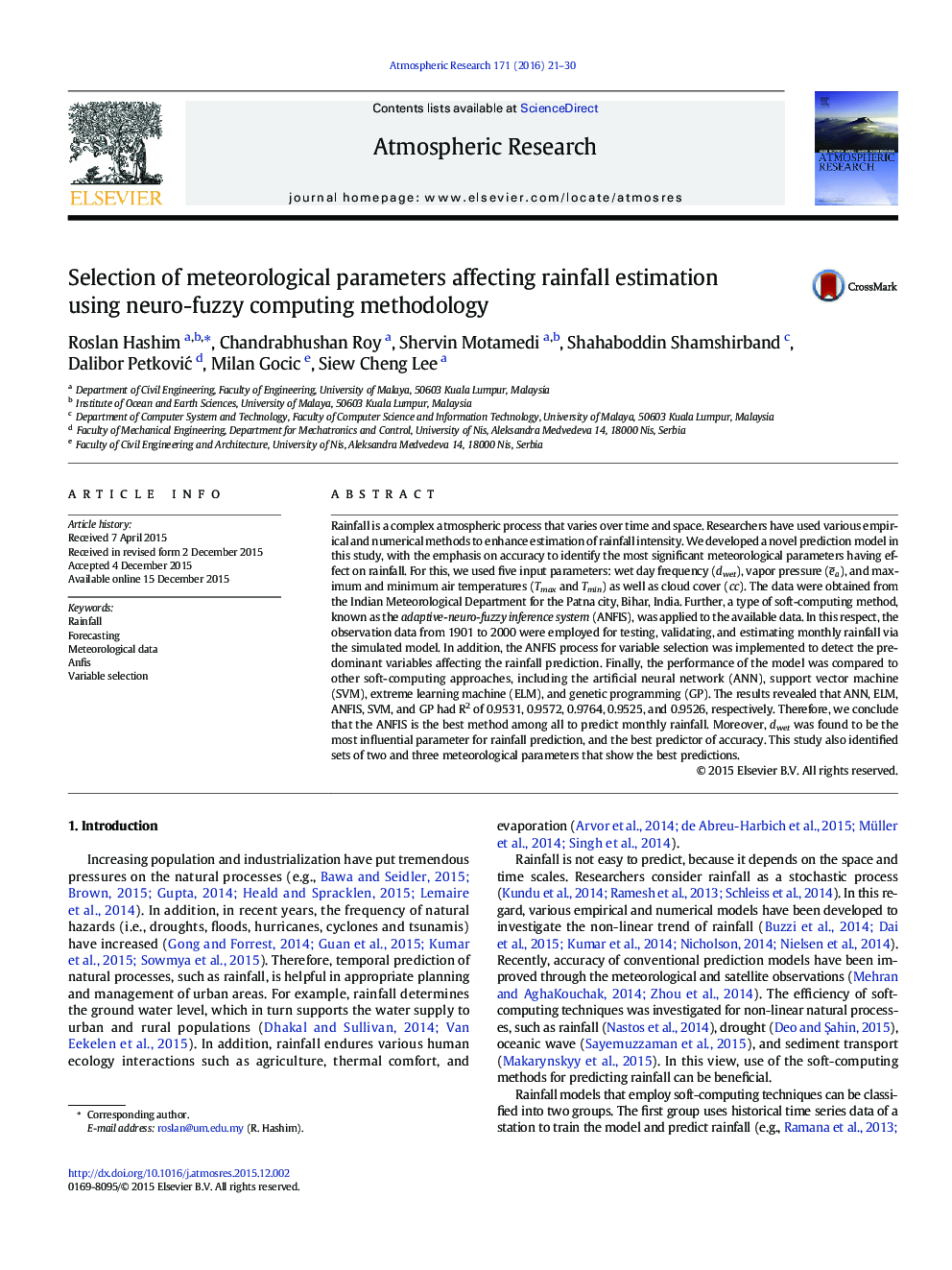| Article ID | Journal | Published Year | Pages | File Type |
|---|---|---|---|---|
| 4449599 | Atmospheric Research | 2016 | 10 Pages |
•The rainfall is a complex atmospheric process and non-linear over time and space.•A novel rainfall prediction model was developed using ANFIS to identify the most significant predictor of accuracy.•The ANFIS network was used to determine how five weather parameters ( a, Tmax, Tmin, dwet, and cc) influence rainfall prediction.
Rainfall is a complex atmospheric process that varies over time and space. Researchers have used various empirical and numerical methods to enhance estimation of rainfall intensity. We developed a novel prediction model in this study, with the emphasis on accuracy to identify the most significant meteorological parameters having effect on rainfall. For this, we used five input parameters: wet day frequency (dwet), vapor pressure (e̅a), and maximum and minimum air temperatures (Tmax and Tmin) as well as cloud cover (cc). The data were obtained from the Indian Meteorological Department for the Patna city, Bihar, India. Further, a type of soft-computing method, known as the adaptive-neuro-fuzzy inference system (ANFIS), was applied to the available data. In this respect, the observation data from 1901 to 2000 were employed for testing, validating, and estimating monthly rainfall via the simulated model. In addition, the ANFIS process for variable selection was implemented to detect the predominant variables affecting the rainfall prediction. Finally, the performance of the model was compared to other soft-computing approaches, including the artificial neural network (ANN), support vector machine (SVM), extreme learning machine (ELM), and genetic programming (GP). The results revealed that ANN, ELM, ANFIS, SVM, and GP had R2 of 0.9531, 0.9572, 0.9764, 0.9525, and 0.9526, respectively. Therefore, we conclude that the ANFIS is the best method among all to predict monthly rainfall. Moreover, dwet was found to be the most influential parameter for rainfall prediction, and the best predictor of accuracy. This study also identified sets of two and three meteorological parameters that show the best predictions.
Graphical abstractFigure optionsDownload full-size imageDownload as PowerPoint slide
